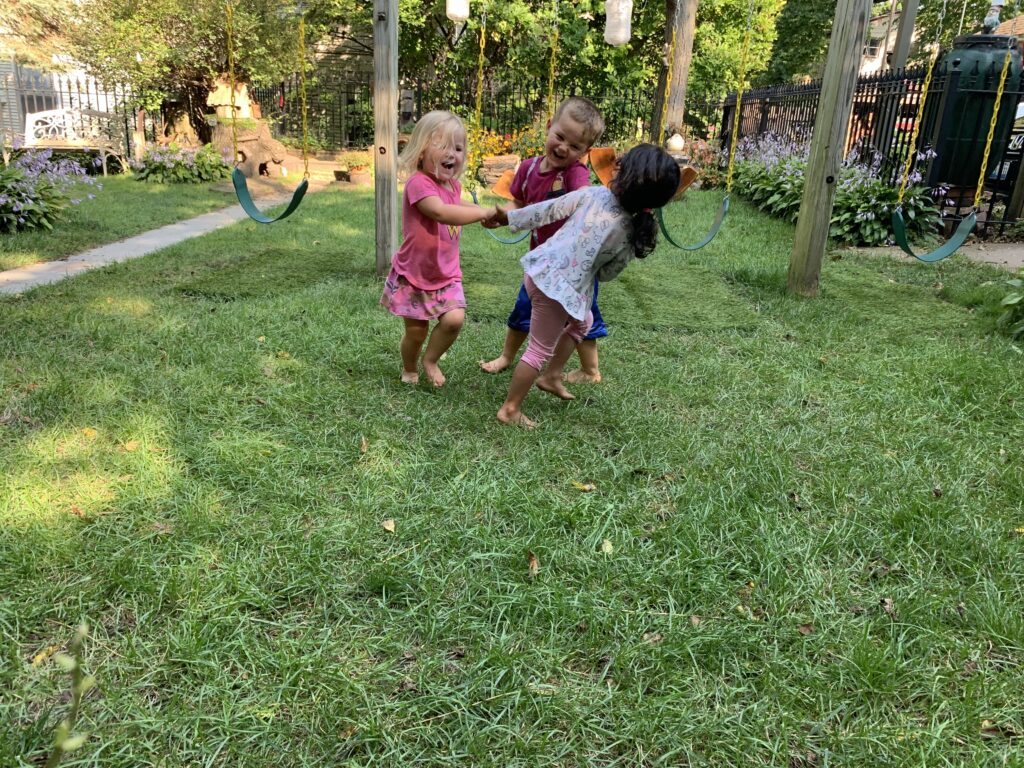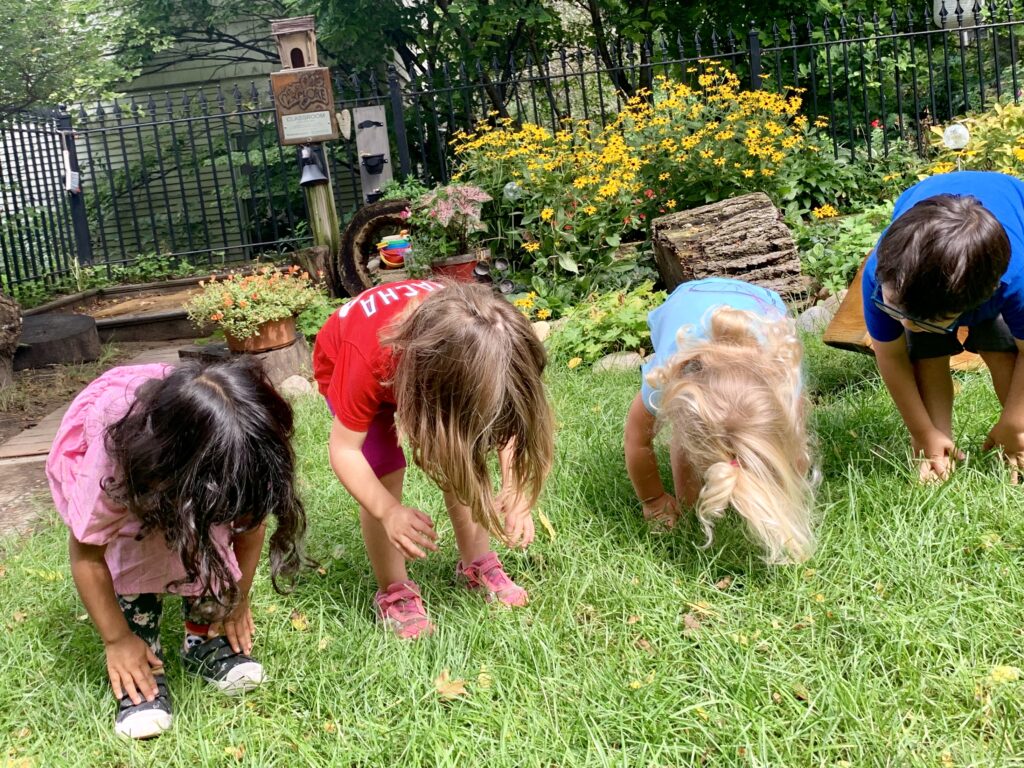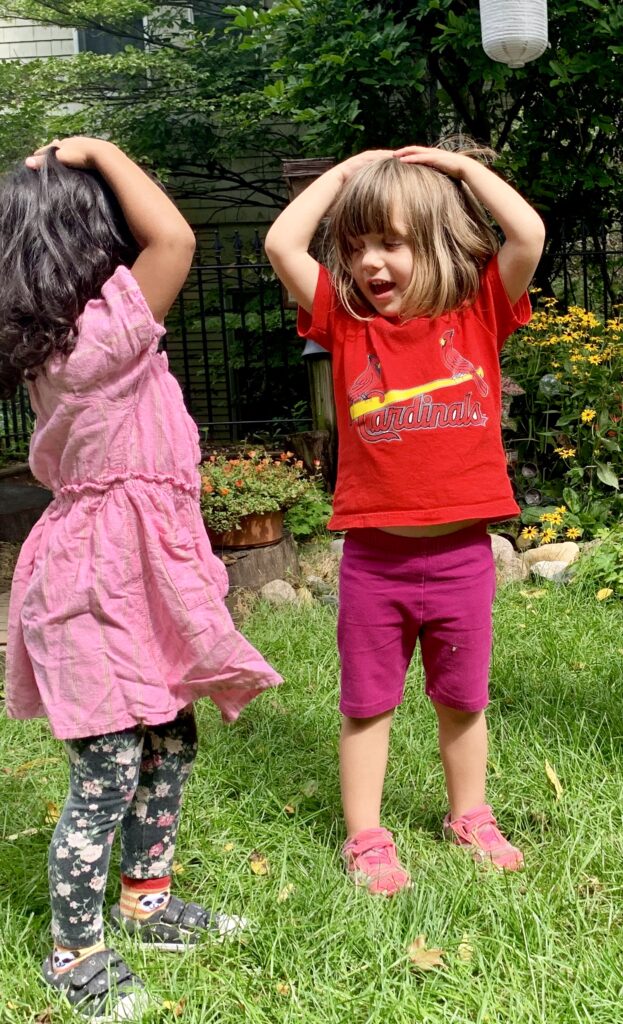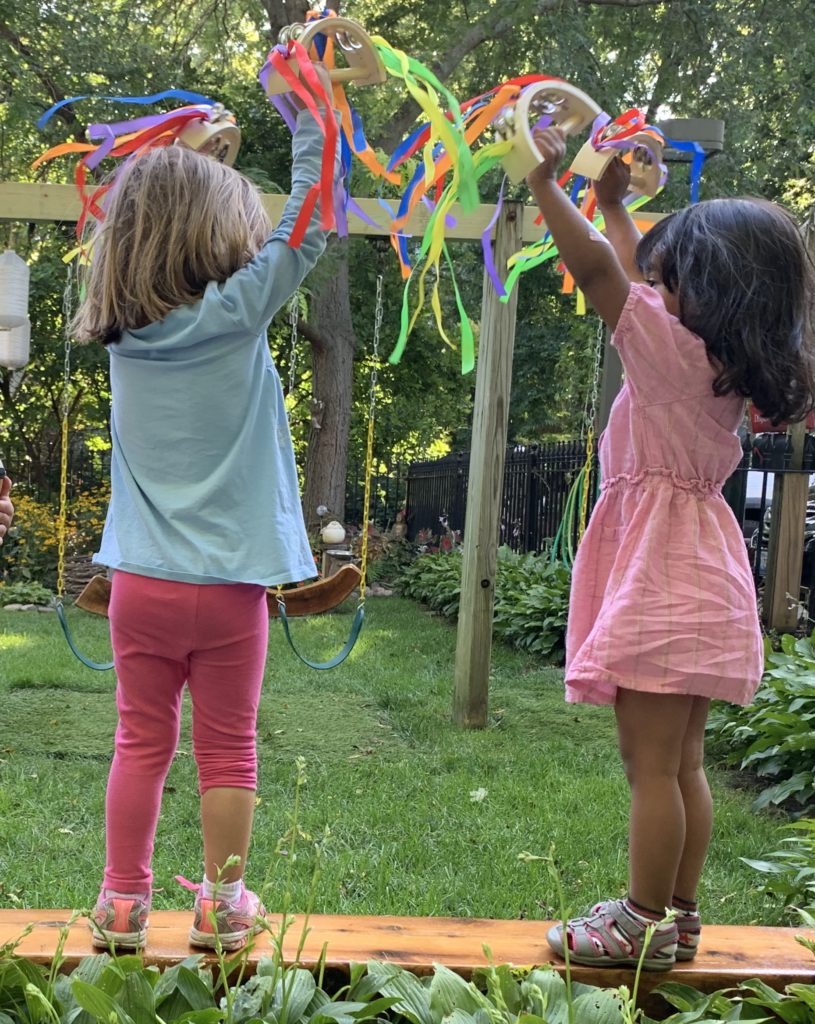Math, Music and Memory!

When we sing counting songs such as “Five Green and Speckled Frogs” or “This Old Man,” we introduce counting and numbers andmath concepts such as removing one from a group.
The repetition and rhythm in these songs make it easy for very young children to remember the name and sequence of number patterns. As they learn to anticipate these patterns and the sequences of events or objects, children build early math skills that they will need in the years to come.
Music holds a powerful place in our brains—and singing utilizes the brain’s language and music areas. When children actively listen to and dance to music, multiple areas in their brains light up. Music and movement are powerful tools for learning. When we combine them, they are an unbeatable combination. As we engage more senses, we engage more areas of the brain—and more learning takes place!
A five-year study at the University of Southern California’s Brain and Creativity Institute found that the use of music in early childhood accelerates brain and language development, speech perception and reading skills.
How many times have you used counting while singing children’s songs? Giving children opportunities to sing to listen to music allows them to explore math concepts such as matching, comparison, patterns, sequencing, counting, if/then prediction, shapes and space.

We use songs to work on vocabulary, memory and repetition. This week, the children have begged to sing the song “Head, Shoulders, Knees and Toes” over and over again.
It’s fun to watch the different levels of coordination, anticipation and expectations as children of different ages and abilities participate in this activity. The beauty of this song is that everybody loves it. Everyone feels successful and happy, regardless of their developmental level.
When children sing songs like “The Wheels on the Bus,” the music and movement stimulate so many areas of the brain that learning is enhanced by as much as 90 percent! Physical actions and exercise also enhance memory and recall.

When I see students singing and laughing their way through “Heads, Shoulders, Knees and Toes” or “Teddy Bear, Teddy Bear,” I know that they are developing physical skills like balance, spatial awareness and hand-eye coordination.
Social skills like cooperation and taking turns, as well as the shared experience of learning how to dance and play with friends is simple and fun.
Children also learn how to think, explore, work things through and develop their language and self-expression skills as they sing and dance or play an instrument.
Have you ever heard a child make up all of the words to a song as they sing it? That’s brain development in progress!

Using songs in your daily routines can help you meet the math standards for early childhood education. Keep it light, easy and age-appropriate! Sing loud, sing often and sing off-key!
The children don’t care. That won’t be what they remember. They will remember the words to the song, which will lay a strong foundation for their future math learning.